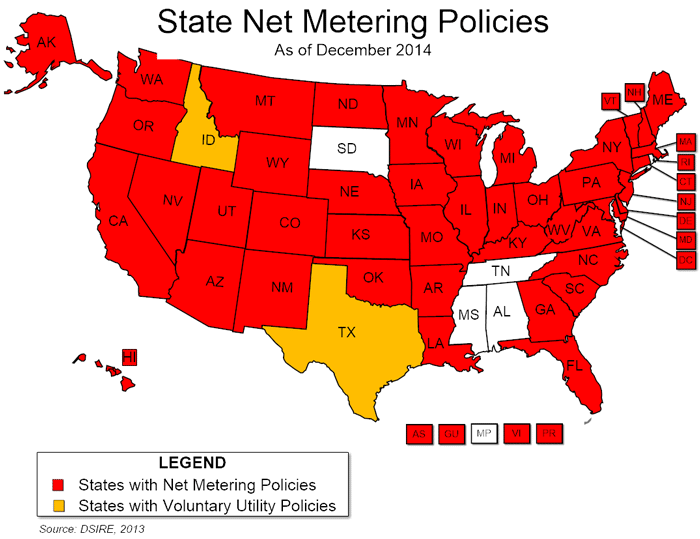In 2012, Keewaytinook Okimakanak (KO), a Tribal Council representing six First Nation communities in Northern Ontario, approached Canadian Solar Solution Inc. (CSSI) for a solution to reduce the community’s’ dependence on diesel fuel and to increase affordable energy supply. Two case studies detail these projects.
Lili Francklyn
IEEE Proceedings Zooms In on Smart Buildings-Microgrid Integration
In a special issue of the Proceedings of the IEEE, 11 research papers cover topics ranging from an analysis of geo-referenced building data in the evaluation of thermal microgrids and the use of automated demand response (DR) systems in smart buildings and microgrids to envisioning changes in behavior as the evolution towards consumer-centric power grids continues.
Main-grid and Microgrid Bankability in Africa: A Comparison
Clusters of gas-fired turbines, big dams, and geothermal projects in Sub-Saharan Africa tend to have very complex financing structures. In addition, they also often involve complex debt/equity structures from local banks. Microgrids, however, are within the reach of much smaller organizations.
HOMER Energy Handpicked News Highlights, Week Ended July 1, 2016
Off-grid home solar-storage, community solar and microgrid projects in Brooklyn, Ontario, Minnesota, Rwanda and Kenya are among the highlight of this week’s microgrid and distributed energy developments.
HOMER Energy’s Weekly New Highlights, June 24, 2016
President Obama announcing a national public-private partnership to scale up integration of renewable energy and storage, and Tesla Motors $2.8 billion dollar bid to acquire SolarCity are among this week’s news highlights.
HOMER Energy’s Handpicked New Highlights, Week Ended June 17, 2016
A lot of news regarding microgrids and distributed energy resources development this past week, including NY’s ConEd partnering with SunPower and Sunverge to install residential solar PV and Li-ion battery storage systems to build to pilot virtual power plants in Brooklyn and Queens.
Maryland Proposal Shines Light on Opposing Forces in Utility-Owned Microgrid Debate
A June 5 news report shines a light on key concerns at the center of state legal and regulatory debates that revolve around utility-owned and public service-oriented microgrid […]
HOMER Energy’s Handpicked News Highlights, Week Ended June 10, 2016
Renewable microgrids in Alabama, India and South Africa and solar net metering’s effects on utility business models and rates are highlights of this past week’s distributed clean energy news.
Remote Utility Projects Fuel 2GW Rise in Global Microgrid Capacity
Navigant Research added nearly 1,600 microgrid projects with a combined generation capacity of 15 gigawatts (GW) to its 2Q Microgrid Tracker, an indication of the extent and degree to which stakeholders are turning to distributed zero- and low-emissions microgrids enhance energy security, reliability, efficiency and resiliency and reduce power sector greenhouse gas (GHG) emissions.
How Time-of-Use Pricing Can Enhance Grid Power and Consumer Choice
¨Time of Use¨pricing can unlock potential gains in grid reliability, efficiency and resiliency, as well as lead to development of effective new business models for utilities and greater choice for consumers, according to the Rocky Mountain Institute.
HOMER Energy’s Handpicked News Highlights, Week Ended June 3, 2016
The latest global microgrid project stats, a hybrid microgrid demo at the Port of Los Angeles and a CHP microgrid for a U.S. Army base in Germany highlight this week’s distributed energy news.
IRENA: Reports Over 8 Million Renewable Energy Jobs in 2015
IRENA researchers track global renewable energy jobs growth, put a number on the true cost of fossil fuels and highlight the shared economic, social and environmental benefits of doubling renewable energy capacity by 2030.
In Africa, Remote Grid Project Opportunities Face Many Challenges
Remote grid opportunities are huge and still expanding across many African markets. Africa’s severe energy crisis has inspired stakeholders to explore diverse solutions, models, and energy mixes to […]
HOMER Energy News Highlights, Week Ended May 27
Microgrids for California multi-family housing, Kenyan rural communities and U.S. military bases feature among this week’s distributed clean energy news highlights.
Parameters for Remote Grid Success in Africa
Like most developing countries in the world, Sub-Saharan African (SSA) countries can present some challenges for promoting businesses such as remote grids. Project cost structures and expenditure patterns […]
HOMER Energy’s Hand-picked News Highlights, Week Ended May 20, 2016
Rwandans respond enthusiastically to solar kiosks, renewables meeting all Portugal’s electricity demand for 4 days and generating a surplus in Germany are among this week’s distributed energy news highlights.
HOMER Energy’s Hand-picked News Highlights, Week Ended May 13, 20
French battery energy storage acquisitions, a solar farmer’s coop in India, and a campus microgrid for SUNY New Paltz number among this week’s distributed energy news highlights.
HOMER Energy’s Hand-picked News Highlights, Week Ended May 6, 2016
US Navy and Marine Corps microgrids, microgrids in Africa, acquisitions and the latest climate science highlight this week’s news.
HOMER’s Hand-Picked Distributed Energy Highlights, Week Ended 4/29
Lots of news in the world of distributed energy this past week, including the U.S. surpassing the 1 million mark in solar energy installations…
HOMER Energy’s Hand-picked News Highlights, Week Ended April 22
The momentum fueling a global transition to low-, or zero-emissions renewable energy resources continues. A gathering of world leaders and representatives of nearly 170 nations in Paris to sign the historic UN climate treaty was just one of the highlights.
New Hampshire Electric Co-op’s New Demand Response Program Uses Smart-grid Technology
New Hampshire Electric Cooperative expects its new Peak Days, Peak Planner and Peak Plus programs will reduce energy costs and add value to the power and energy products and services it provides by lowering or shifting consumer energy consumption from peak to non-peak periods of the day.
HOMER Energy’s Hand-Picked Weekly News Highlights: April 15
Lots happening in the world of microgrids and distributed energy this week…
ICEPAG 2016: Microgrid Global Summit – March 22, 23, 24
ICEPAG 2016: Microgrid Global Summit: March 22, 23, 24 A gathering of global energy professionals focused on the business and technology issues Utility distribution Microgrids End user deployments Remote […]
Carnegie Wave Energy to Build Worlds First Wave Powered Microgrid
Western Australian wave power company Carnegie Wave Energy has revealed that it is collaborating with WA network operator Western Power to develop the world’s first wave-integrated renewable energy microgrid […]
Lighting African Households with Smartphones
Households in Senegal could soon be able to light their homes using their mobile phones. Two French start-up companies have come up with a new streetlighting system using […]
President Obama declares November 2015 as Critical Infrastructure Security and Resilience Month
BY THE PRESIDENT OF THE UNITED STATES OF AMERICA A PROCLAMATION Our Nation’s critical infrastructure is central to our security and essential to our economy. Technology, energy, and […]
Obama Administration Joins with Public and Private Sector to Increase Access to Off-Grid Clean Energy
President Obama is committed to reducing carbon pollution and ensuring that people everywhere can tap into clean sources of energy to power their homes and businesses. That is […]
ABB and Microsoft Join Forces to Launch Next-generation Electric Vehicle Charging Services Platform
ZURICH, Switzerland and REDMOND, WA, United States — October 20, 2015 — ABB and Microsoft Corp. announced today the worldwide availability of a new electric vehicle (EV) fast-charging […]
Groundbreaking Initiative To Create Fleet Of Hybrid-Electric Buildings
NEWPORT BEACH and SAN FRANCISCO, Calif., Oct. 12, 2015 /PRNewswire/ — The Irvine Company announced this week an initiative to become the world’s first major real estate company to […]
New IRENA Guide Helps Countries Integrate Larger Share of Renewable Energy
Power sector transformation guide moves countries from renewable energy targets to implementation Tokyo, Japan, 8 October 2015 – A new report from the International Renewable Energy Agency (IRENA) aims […]


























